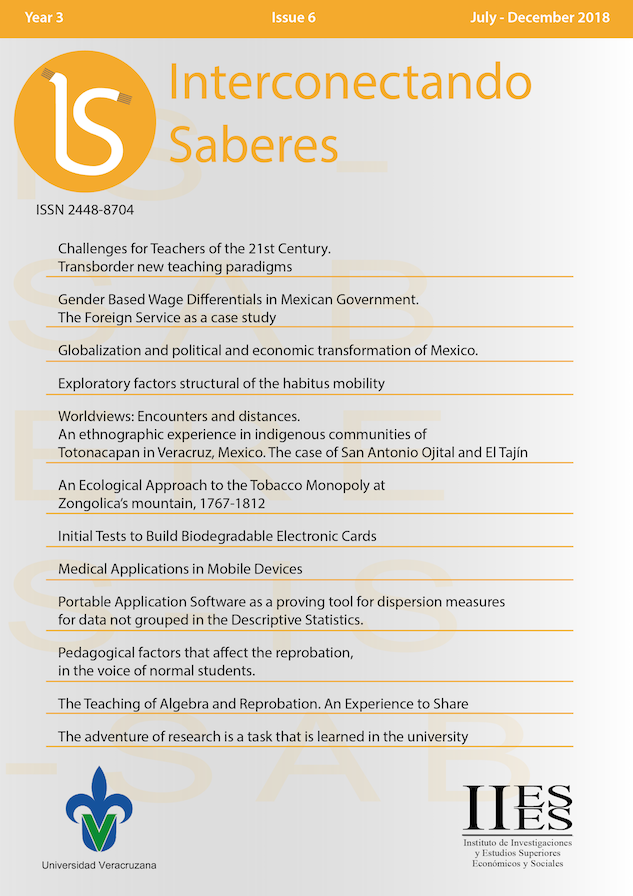Abstract
Gender based wage differentials is widely observed in the world labor markets. This paper studies the wage differences between men and women that works in the Mexican government using as a case of study the Mexican Secretariat of Foreign Affairs. Results from non-parametric statistical hypothesis test to compare two related samples suggest that male-female wage differentials are explained because of a high degree of vertical segregation, where men tend to occupy higher ranking and better paying positions than women.
References
Anker, R. (1997). Theories of occupational segregation by sex: An overview. International Labour Review, (136)3, pp. 315-339.
Becker, G. (1957). The Economics of Discrimination. Chicago University Press, Chicago.
Bowles, H., Babcock, L. y Mginn, K. (2005). Constraints and triggers: situational mechanics of gender in negotiation. Journal of Personality and Social Psychology, Vol. 89, pp. 951-965.
Daniel, W. (1990). Applied Nonparametric Statistics. 2nd ed. Boston: PWS-Kent Publishing Company.
Eckel, C. y Grossman, P. (2008). Differences in the economic decisions of men and women: experimental evidence. Plott, Charles, Smith, Vernon (Eds.), Handbook of Experimental Economics Results, Vol. 1, Elsevier, New York.
Gobierno de la República (2013). Plan Nacional de Desarrollo 2013-2018. México. Recuperado de http://pnd.gob.mx/
Gómez, C. (2001). Mujer y trabajo: principales ejes de análisis. Papers 63/64, 123-124. Recuperado de http://dx.doi.org/10.5565/rev/papers/v63n0.1210
Morrison, A.; White, R. & Van Velson, E. (1987). Breaking the Glass Ceiling: can women reach the top of america´s largest corporations? New York, Adison- Wesley
Niederle, M. y Vesterlund, L. (2007). Do women shy away from competition? Do men compete too much? Quarterly Journal of Economics Vol. 122, pp. 1067–1101.
OIT Organización Internacioal del Trabajo (2016). Las mujeres en el trabajo: Tendencias de 2016. Recuperado de https://www.ilo.org/wcmsp5/groups/public/---dgreports/---dcomm/-- publ/documents/publication/wcms_483214.pdf
OIT Organización Internacioal del Trabajo (2014). Igualdad de género y no discriminación en la gestión del empleo. Recuperado de https://www.ilo.org/wcmsp5/groups/public/---americas/---ro-lima/---sro-san_jose/documents/publication/wcms_326274.pdf
ONU Organización de las Naciones Unidas (2018). Agenda 2030 y los Objetivos de Desarrollo Sostenible. Recuperado de https://repositorio.cepal.org/bitstream/handle/11362/40155/10/S1700334_es.pdf
Phelps, E. (1972): The Statistical Theory of Racism and Sexism, American Economic Review, pp. 659-661.
Roldán-García, E., Leyra-Fatou, B. y Contreras-Martínez, L. (2012). Segregación laboral y techo de cristal en trabajo social: análisis del caso español. Portularia, XII(2), pp.43-56. Recuperado de http://www.redalyc.org/articulo.oa?id=161024690004
Secretaría de Relaciones Exteriores (2017). Programa Sectorial de Relaciones Exteriores 2013-2018. Recuperado de https://sre.gob.mx/images/stories/marconormativodoc/dof131213-p.pdf.

